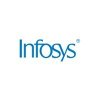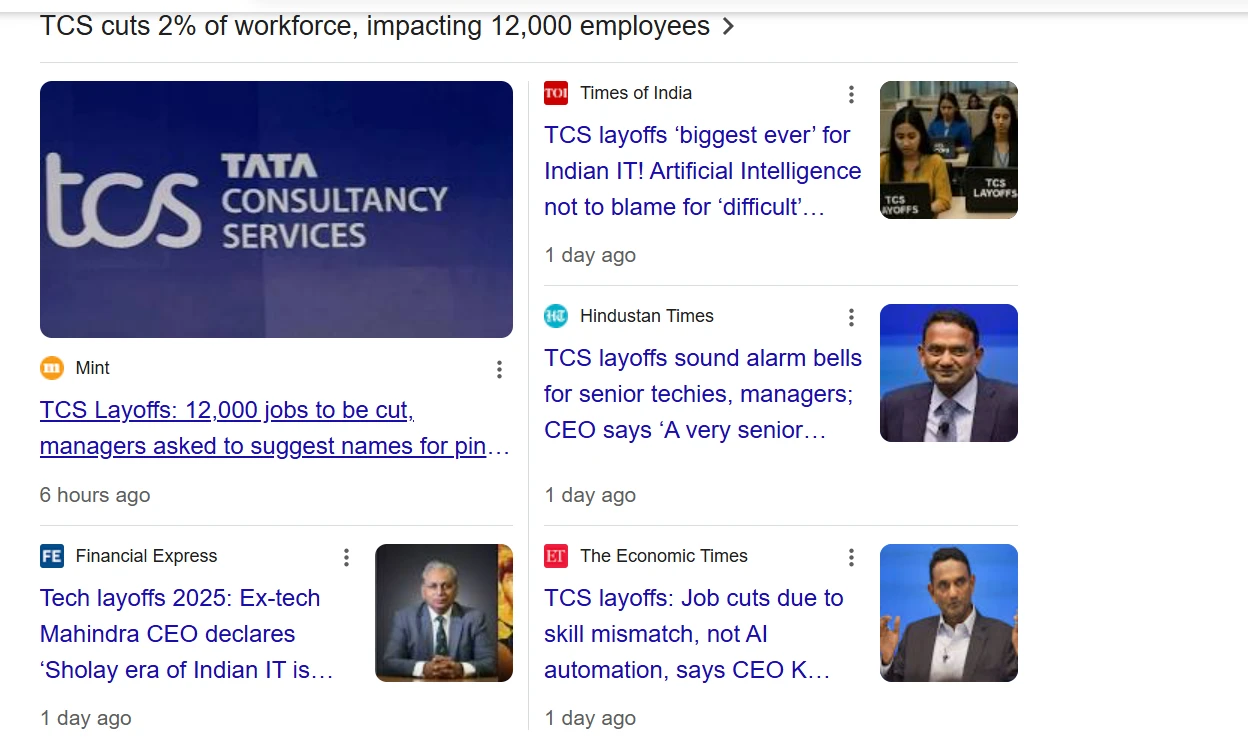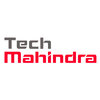
i
TCS
Filter interviews by
TCS System Administrator Interview Questions and Answers
26 Interview questions
A System Administrator manages and maintains computer systems, networks, and servers to ensure optimal performance and security.
Responsible for installing, configuring, and maintaining operating systems and software applications.
Monitors system performance and troubleshoots issues to ensure uptime and reliability.
Manages user accounts, permissions, and access controls to maintain security.
Performs regular backups ...
Key modules in system administration include user management, system monitoring, security, and backup management.
User Management: Creating, modifying, and deleting user accounts and permissions.
System Monitoring: Using tools like Nagios or Zabbix to track system performance.
Security Management: Implementing firewalls and antivirus solutions to protect systems.
Backup Management: Regularly scheduling backups using t...
Various types of RC in TR include Remote Control, Release Candidate, and Root Cause.
Remote Control: Refers to controlling a device or system from a distance.
Release Candidate: A version of software that is ready for testing before final release.
Root Cause: The underlying cause of a problem or issue.
File permissions determine who can access, modify, or execute files on a system. Scripts are executable files containing a series of commands.
File permissions control access to files and directories on a system
There are three types of permissions: read, write, and execute
Permissions are set for three categories of users: owner, group, and others
Scripts are executable files that contain a series of commands to be e...
What people are saying about TCS





Logical volume, group, and physical volume are components of logical volume management used in storage systems.
Logical volume: A virtual storage device created by combining multiple physical volumes.
Volume group: A collection of physical volumes grouped together to form a pool of storage.
Physical volume: A physical storage device such as a hard drive or SSD that is part of a volume group.
Example: In Linux, Logical...
Network bonding is the process of combining multiple network interfaces together to increase bandwidth and provide redundancy.
Network bonding is also known as link aggregation or port trunking.
It can be used to increase network throughput by combining the bandwidth of multiple interfaces.
Provides fault tolerance by ensuring network connectivity even if one interface fails.
Common bonding modes include active-backup...
LVM (Logical Volume Manager) is a tool used to manage disk space by creating logical volumes from physical volumes.
LVM allows for dynamic resizing of logical volumes without the need to unmount the filesystem
To resize an LVM volume, first resize the filesystem within the volume, then resize the logical volume itself
Use commands like lvextend and resize2fs to resize LVM volumes
Python concepts include data types, loops, functions, classes, and libraries.
Data types: int, float, str, list, tuple, dict, set
Loops: for loop, while loop
Functions: defining functions, passing arguments, returning values
Classes: creating classes, defining methods, inheritance
Libraries: importing and using libraries like math, os, and datetime
Java OOP concepts include encapsulation, inheritance, polymorphism, and abstraction, essential for object-oriented programming.
Encapsulation: Bundling data and methods. Example: A class 'Car' with attributes like 'speed' and methods like 'accelerate()'.
Inheritance: Deriving new classes from existing ones. Example: 'ElectricCar' inherits from 'Car'.
Polymorphism: Ability to take many forms. Example: Method overloadi...
Creating a table in SQL involves defining its structure, including columns, data types, and constraints.
Use the CREATE TABLE statement to define a new table.
Specify column names and their data types, e.g., 'id INT', 'name VARCHAR(100)'.
Add constraints like PRIMARY KEY, NOT NULL, and UNIQUE for data integrity.
Example: CREATE TABLE users (id INT PRIMARY KEY, name VARCHAR(100) NOT NULL);
You can also define foreign ke...
TCS System Administrator Interview Experiences
31 interviews found
I applied via Referral and was interviewed in Oct 2024. There were 3 interview rounds.
(2 Questions)
- Q1. About basic linux Architecture
- Q2. About linux storage
(2 Questions)
- Q1. About my current project
- Q2. About shell scripting
(2 Questions)
- Q1. About myself and my work experience
- Q2. About relocation and shifts
I applied via Naukri.com and was interviewed in Aug 2024. There was 1 interview round.
(5 Questions)
- Q1. What is lnode, filesystem
- Ans.
lnode is a data structure representing a file or directory in a filesystem.
lnode contains metadata about the file or directory, such as permissions, owner, size, and timestamps.
Filesystems organize and manage data on storage devices, providing a way to store, retrieve, and manage files.
Examples of filesystems include ext4, NTFS, and FAT32.
- Q2. What is lvm and how to redize it
- Q3. What is logical volume , group and physical volume
- Ans.
Logical volume, group, and physical volume are components of logical volume management used in storage systems.
Logical volume: A virtual storage device created by combining multiple physical volumes.
Volume group: A collection of physical volumes grouped together to form a pool of storage.
Physical volume: A physical storage device such as a hard drive or SSD that is part of a volume group.
Example: In Linux, Logical Volu...
- Q4. What isfile oernission and scrip
- Ans.
File permissions determine who can access, modify, or execute files on a system. Scripts are executable files containing a series of commands.
File permissions control access to files and directories on a system
There are three types of permissions: read, write, and execute
Permissions are set for three categories of users: owner, group, and others
Scripts are executable files that contain a series of commands to be execut...
- Q5. What is network bonding
- Ans.
Network bonding is the process of combining multiple network interfaces together to increase bandwidth and provide redundancy.
Network bonding is also known as link aggregation or port trunking.
It can be used to increase network throughput by combining the bandwidth of multiple interfaces.
Provides fault tolerance by ensuring network connectivity even if one interface fails.
Common bonding modes include active-backup, bal...
Skills evaluated in this interview
Normal aptitude questions
(2 Questions)
- Q1. Why are you joining tcs
- Q2. Explain concepts you know in python
- Ans.
Python concepts include data types, loops, functions, classes, and libraries.
Data types: int, float, str, list, tuple, dict, set
Loops: for loop, while loop
Functions: defining functions, passing arguments, returning values
Classes: creating classes, defining methods, inheritance
Libraries: importing and using libraries like math, os, and datetime
Skills evaluated in this interview
(2 Questions)
- Q1. Tell me about yourself
- Q2. Share your previous experience
I applied via LinkedIn and was interviewed in Feb 2024. There was 1 interview round.
(2 Questions)
- Q1. Active Directory
- Q2. Group policy , How to implement them
- Ans.
Group policies are implemented through Active Directory to manage user and computer settings in a network environment.
Create a new Group Policy Object (GPO) in Active Directory
Link the GPO to the appropriate Organizational Unit (OU)
Configure the settings within the GPO using Group Policy Management Console (GPMC)
Apply the GPO to the desired users or computers
Use Group Policy Preferences to deploy settings like mapped d...
Interview Preparation Tips
Skills evaluated in this interview
I applied via Company Website and was interviewed in Oct 2023. There were 2 interview rounds.
The coding question are come under the real time scenerios and we can create the program in any langauage
(3 Questions)
- Q1. Introduction about your self
- Ans. You can give a brief idea about your selft
- Q2. Java Oops cancept
- Ans.
Java OOP concepts include encapsulation, inheritance, polymorphism, and abstraction, essential for object-oriented programming.
Encapsulation: Bundling data and methods. Example: A class 'Car' with attributes like 'speed' and methods like 'accelerate()'.
Inheritance: Deriving new classes from existing ones. Example: 'ElectricCar' inherits from 'Car'.
Polymorphism: Ability to take many forms. Example: Method overloading wi...
- Q3. Sql creating the table
- Ans.
Creating a table in SQL involves defining its structure, including columns, data types, and constraints.
Use the CREATE TABLE statement to define a new table.
Specify column names and their data types, e.g., 'id INT', 'name VARCHAR(100)'.
Add constraints like PRIMARY KEY, NOT NULL, and UNIQUE for data integrity.
Example: CREATE TABLE users (id INT PRIMARY KEY, name VARCHAR(100) NOT NULL);
You can also define foreign keys to...
I applied via Campus Placement
(1 Question)
- Q1. Different Linux Commands and their use cases
- Ans.
Various Linux commands and their use cases
ls - list directory contents
cd - change directory
pwd - print working directory
cp - copy files and directories
mv - move or rename files and directories
rm - remove files and directories
grep - search for patterns in files
chmod - change file permissions
ps - display information about running processes
top - display and update sorted information about processes
df - report file system ...
(2 Questions)
- Q1. Are you fine with rotational shifts?
- Q2. Are you willing to relocate?
Skills evaluated in this interview
Easy questions like LCM gcd time work

(3 Questions)
- Q1. What do you mean by VPN
- Q2. What is https and http
- Ans.
HTTP is a protocol used for transferring data over the internet, while HTTPS is a secure version of HTTP that encrypts data.
HTTP stands for Hypertext Transfer Protocol and is used for transmitting data over the internet
HTTPS is a secure version of HTTP that uses encryption to protect data
HTTPS is commonly used for secure transactions such as online banking or shopping
HTTP operates on port 80, while HTTPS operates on po...
- Q3. What is the port number of udp
- Ans.
The port number of UDP is 17.
UDP uses port number 17 for communication.
UDP is a connectionless protocol, so it does not require a specific port number for each connection.
Port number 17 is commonly used for the Daytime Protocol.
UDP port numbers range from 0 to 65535.
Interview Preparation Tips
Skills evaluated in this interview

(2 Questions)
- Q1. Prepare on all areas which skill your interviewing
- Ans.
Prepare for a System Administrator interview by focusing on key technical skills and soft skills essential for the role.
Understand operating systems: Proficiency in Windows Server and Linux distributions (e.g., Ubuntu, CentOS).
Networking fundamentals: Knowledge of TCP/IP, DNS, DHCP, and VPN configurations.
System security: Familiarity with firewalls, intrusion detection systems, and security best practices.
Virtualizatio...
- Q2. Basic knowleage is required
(1 Question)
- Q1. Managment knowledge, understading of workflow, understanding change control policy
(1 Question)
- Q1. Salary discussion, job location discussion, document details
Interview Preparation Tips
understand architecture
TCS Interview FAQs
The duration of TCS System Administrator interview process can vary, but typically it takes about less than 2 weeks to complete.
Tell us how to improve this page.
TCS Interviews By Designations
- TCS System Engineer Interview Questions
- TCS Software Developer Interview Questions
- TCS Software Engineer Interview Questions
- TCS Assistant System Engineer Interview Questions
- TCS Assistant System Engineer Trainee Interview Questions
- TCS IT Analyst Interview Questions
- TCS Ninja Interview Questions
- TCS Java Developer Interview Questions
- Show more
Interview Questions for Popular Designations
- Software Engineer Interview Questions
- Senior Engineer Interview Questions
- System Engineer Interview Questions
- Senior Associate Interview Questions
- Senior Analyst Interview Questions
- Linux Administrator Interview Questions
- Specialist Interview Questions
- Senior System Administrator Interview Questions
- Show more
Overall Interview Experience Rating
based on 38 interview experiences
Difficulty level
Duration
Top Skills for TCS System Administrator
Interview Questions from Similar Companies
TCS System Administrator Reviews and Ratings
based on 616 reviews
Rating in categories
|
System Engineer
1.1L
salaries
| ₹3.9 L/yr - ₹8.3 L/yr |
|
IT Analyst
65.1k
salaries
| ₹8 L/yr - ₹13 L/yr |
|
AST Consultant
54.3k
salaries
| ₹12.4 L/yr - ₹21 L/yr |
|
Associate Consultant
33.8k
salaries
| ₹15.3 L/yr - ₹28.5 L/yr |
|
Assistant System Engineer
33.2k
salaries
| ₹2.4 L/yr - ₹5 L/yr |

Amazon

Wipro

Infosys

Accenture
- Home >
- Interviews >
- TCS Interview Questions

















